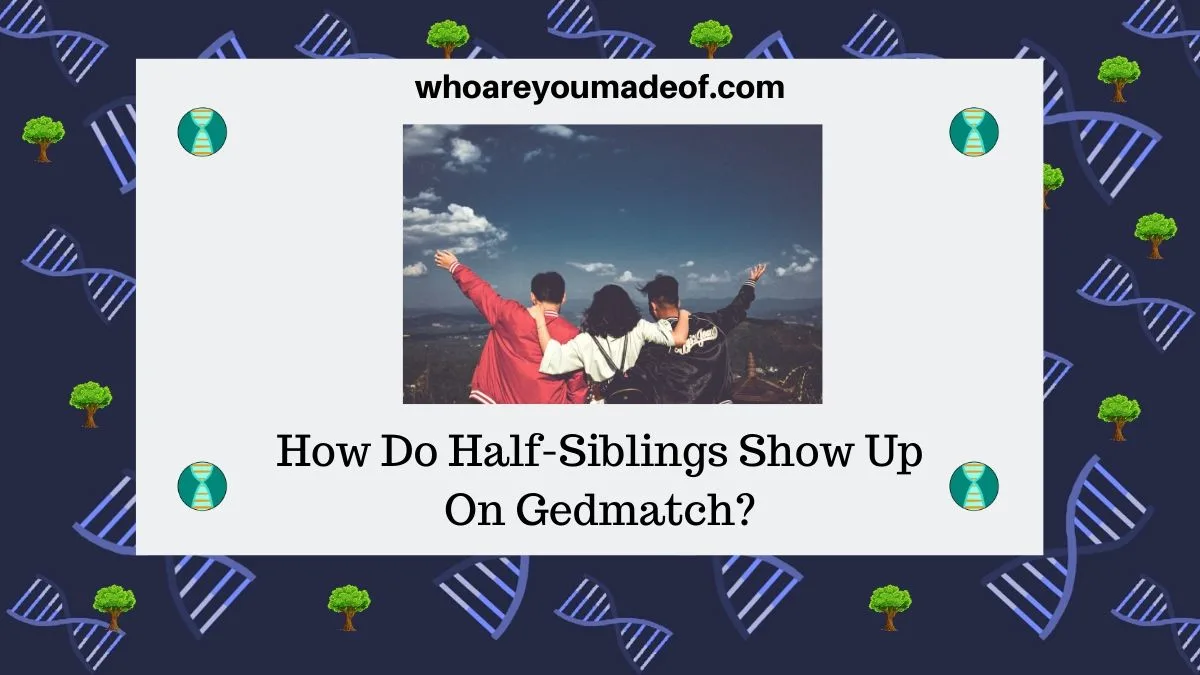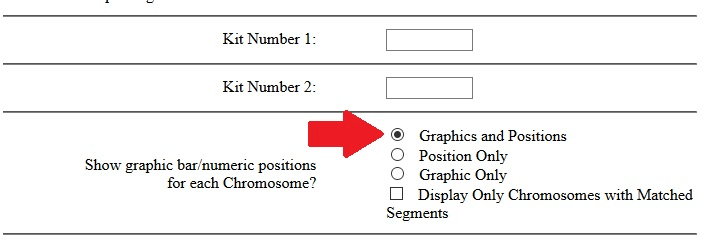Do you want to know how half-siblings show up on Gedmatch? In this post, see of an example of how two half-siblings match on the site, plus tips on how to tell whether a match is a full or half-sibling.
Much can be learned by having your siblings, whether full or half-siblings, upload their DNA data files to Gedmatch. You can learn more about your ancestors, as well as the exact nature of your sibling relationship.

Let's get started by finding out how half-siblings show up on Gedmatch results. Gedmatch results are easy to understand, and I'll show you exactly what to look for when examining your DNA relationship with your sibling.
Half-siblings on Gedmatch results
The first likely place that you will find a half-sibling DNA match on Gedmatch is on your One-to-Many results. This is basically your DNA match list on the site.
Below, you can see how a half-sibling might show up on your list. When it comes to sibling matches, we are most interested in the number in the Total cM column under "Autosomal" DNA:

These two half-siblings share 1628 centimorgans (cMs) of DNA. This falls within the range of what we expect to see when it comes to shared DNA between half-siblings: approximately 1300-2300 cMs.
There are a few other items that we can note about the shared DNA between these two half-siblings:
- The largest shared DNA segment is 97.4 cMs in length
- The total number of shared X-DNA is 139.8 cMs
- The largest segment of shared X-DNA is 39.9 cMs
- The half-sibling uploaded their DNA from Ancestry
It is very important to note that there are other close relatives that have ranges of shared DNA that overlap with the range of half-siblings. These relatives include:
- grandparent
- aunt or uncle
- grandchild
In other words, it is not possible to determine whether someone is a grandparent, half-sibling, aunt, uncle, or grandchild based only on the amount of autosomal DNA shared between two people. This is because the shared DNA ranges for all of these relationships are similar to that of half-sibling.
Other DNA details, and data such as the age of the individuals and their family tree information can help narrow down possible relationships.
How to know if a DNA match on Gedmatch is a full or half-sibling?
If you have a DNA match on Gedmatch and you are sure that they are your sibling, there are a few things that you can check to help you determine whether they are a full or half-sibling.
As we already mentioned, you can check to see the total amount of shared centimorgans that you and your sibling share. This information is available on your One-to-Many results or on the One-to-One comparison tool.
Full siblings typically share more than 2300 cMs, and half-siblings can share between 1300-2300 cMs.
There is a slight overlap in the range for shared DNA for full and half-siblings. Generally speaking:
- siblings who share more than 2400 centimorgans are almost certainly full siblings**.
- Siblings who share less than 2200 centimorgans are most likely half-siblings**
** These are estimations. There are always exceptions that fall slightly over or under the expected range
As you might notice siblings who share between 2200-2400 cMs who want to be sure about whether they are full or half-siblings can perform further DNA analysis (see below) to figure out the exact nature of their genetic relationship.
See if you share half-identical or fully-identical regions
Half-siblings will not share any large segments over fully-identical regions. Full siblings, on the other hand, will share many fully-identical regions.
What is the meaning of all of this?
Each person inherits DNA from both of their parents. The parents' two copies of each chromosome undergo a process called "recombination" to make one new copy of each chromosome to pass down to their child.
Full siblings, inevitably, will share lots of segments where their new copy of their parents' two chromosomes happens to be identical on both copies of the chromosome. In other words, the copies of the chromosome that they inherited from each of their parents happens to exactly match their full sibling.
Since half-siblings only share one parent, we do not expect them to share large fully-identical regions. In short, the DNA segments shared between half-siblings will only match on one copy of the chromosome (half-identical regions).
Fortunately, you do not need an advanced degree in biology to figure out if you and your sibling on Gedmatch share fully identical or half-identical DNA segments. There is a free tool on the site, and it's easy to use.
Using the One-to-One comparison tool, compare your DNA with your sibling's kit. You'll need your kit number and your sibling's kit number in order to use the tool.
When you are entering in your data to run the tool, be sure to select "Graphics and Position" as the display option for the results. This is how we can inspect the shared segments to determine if they match on both copies of the chromosomes - or not.

In the image below, from the results of the tool for two full siblings, we see long green bars. This means that DNA at these locations is identical on both copies of the chromosome.

The yellow bars are identical segments where DNA is identical on only one copy of the chromosome. For half-siblings, we would expect to see lots of yellow bars, some long and some small, like in the image below:

Two half-sisters with same father? Try the X-DNA comparison tool
If you and your sibling are both biologically female and possibly share the same father, you can compare your DNA with the X-DNA One-to-One tool.
If you share the same father, you should share an entire X-chromosome. since females inherit an intact copy of their father's X-DNA chromosome. Mothers pass down a recombined copy, meaning that there will some shared X-DNA, but not an entire, intact X chromosome.
A helpful blog post to read on this topic is as follows:
- How can X-DNA help with maternal vs paternal? (Kitty Cooper's Blog)
Conclusion
I hope that this post has helped you understand more about how half-siblings show up on Gedmatch and how to determine whether a DNA match might be a full or half-sibling.
If you have any questions about something that you read in this post, please join us in the discussion below.
Thanks for stopping by!


Cinderella
Tuesday 15th of November 2022
Is there anyone on here who can tell me what my X DNA One to One comparison means? I'm trying to find out if I share the same biological father with another woman. We compared our kits. Thanks.
Mercedes
Wednesday 16th of November 2022
Hello! You might find this article helpful: https://whoareyoumadeof.com/blog/how-to-understand-gedmatch-x-one-to-one-results/ Please let me know if you have any questions and I'll see if I can help :) Mercedes
Scott
Wednesday 2nd of November 2022
Hi Guys - I am trying to confirm if my sister is a half or full sibling. When I run the above report I don't see a lot of large Green areas such as seen on the sample above or on Videos showing the difference between full and half sibling results. The below is our ancestry match up on the DNA hits. As you can see Ancestry doesn't see us as full siblings but I have to be totally sure before I can put this to my Family. I have contacted both Ancestry and Gedmatch to see if they could confirm either way but neither will. Does anyone know how I can get a definitive answer to this? It is driving me batty!
Close Family – 1st Cousin 1,974 cM | 28% shared DNA Both sides